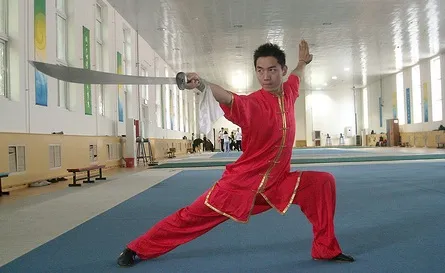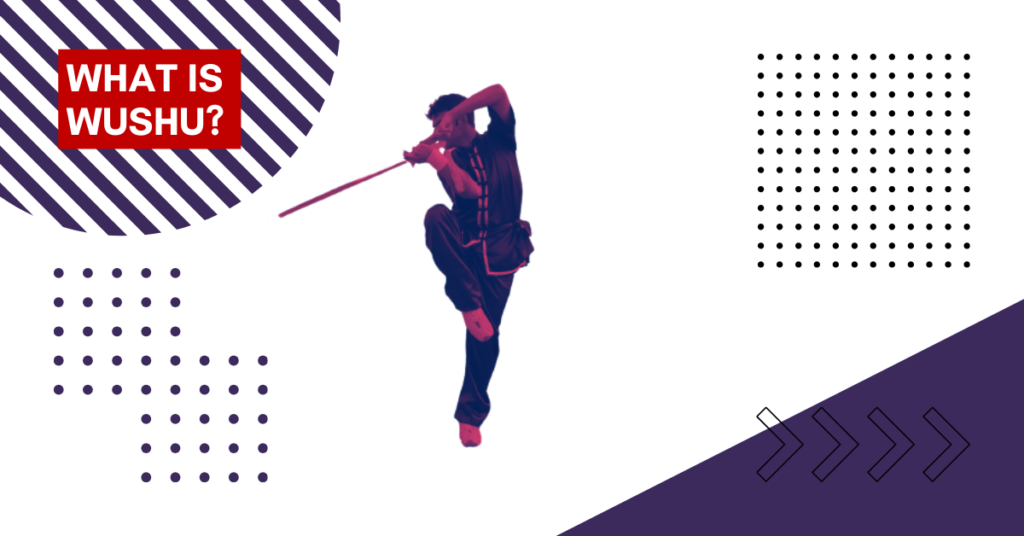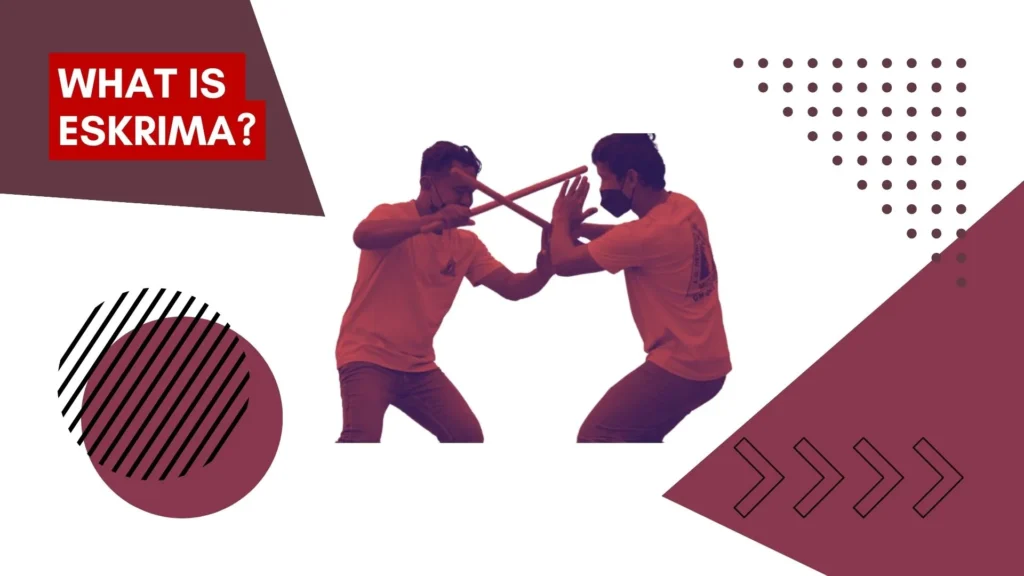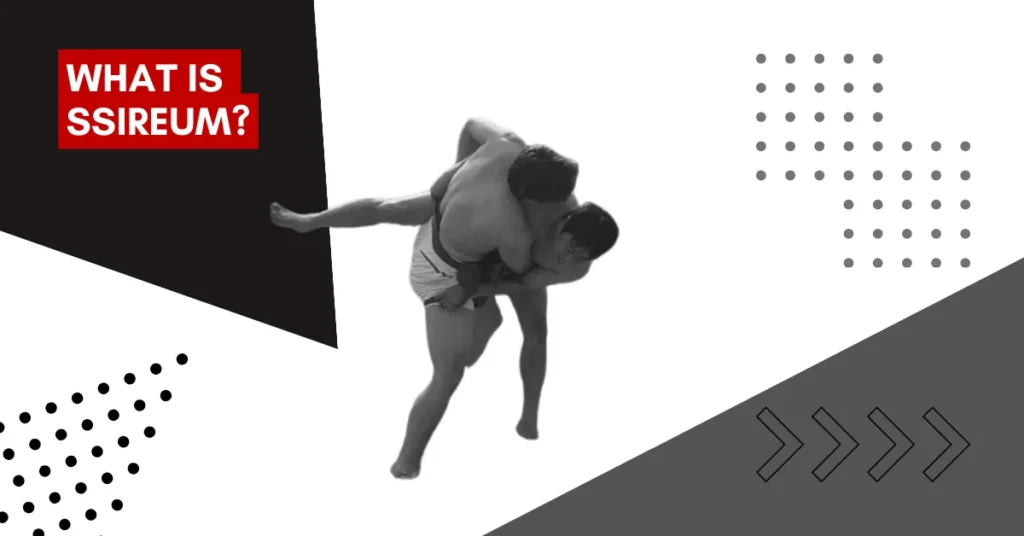Did you know that Wushu, the traditional Chinese martial art form, is practiced worldwide for self-defense and as a means of showcasing body language? With its rich history and diverse techniques, Wushu holds a significant place in Chinese culture and society. From ancient civilization to modern times, this art form has captivated audiences with its blend of technique, artistry, and cultural heritage. Let’s delve into the world of Wushu and explore its styles, techniques, and training methods, as well as its impact on Chinese martial arts.
Wushu, meaning “martial arts” in Mandarin, is a dynamic and visually captivating Chinese martial art form. Known for its combination of athleticism, grace, and combat techniques, Wushu encompasses various styles, each with unique movements and philosophies. Practitioners undergo rigorous training to master traditional and contemporary techniques, including acrobatics and weapon skills. Beyond its physical aspects, Wushu reflects a rich cultural heritage, instilling values like discipline and respect. Whether practiced competitively, for self-defense, or as an art form, Wushu continues to captivate globally for its harmonious blend of strength, flexibility, and inner calm.
Table of Contents
Key Takeaways
- Wushu is a traditional Chinese martial art form that combines technique, artistry, and culture.
- It is played in various styles, with both weapons and bare hands.
- Wushu has its roots in ancient civilization and is practiced worldwide for self-defense and to showcase body language.
- The International Wushu Federation (IWUF) is the international governing body for competitive Wushu.
- Wushu has two main types – Sanshou, which involves wrestling moves, and Taolu, which includes a choreographed set of hand and leg movements.
History of Wushu
Wushu, an ancient Chinese martial art form, has a fascinating history that dates back thousands of years. It originated from the combination of military wushu, practiced by soldiers, and folk wushu, practiced by ordinary people.
The interaction between these two forms led to the development of various combat techniques and weapons. Military wushu focused on large-scale battles and honed soldiers’ skills in wielding weapons, while folk wushu emphasized individual combat and specialized in various boxing styles.
Notable figures in the history of wushu include heroes such as Yue Fei, Qi Jiguang, and Yu Dayou. They played significant roles in promoting the development and interaction of military and folk wushu, leaving a lasting impact on the art form.
The ancient roots of wushu in Chinese culture have shaped it into the diverse and dynamic martial art we know today.
Traditional Wushu
Traditional wushu is a form of martial arts that encompasses various defense and attack techniques using both bare hands and weapons. It is deeply rooted in Chinese classical culture and emphasizes the harmony of vigour, energy, and spirit. Practitioners of traditional wushu undergo rigorous mental training, learn fighting techniques, and follow set routines.
Traditional wushu is influenced by Chinese philosophical concepts such as Yin-Yang and the five elements. The practice incorporates these principles to achieve balance and harmony in movements and techniques. Qi, Shen, and acupuncture points are also integral aspects of traditional wushu, as practitioners study the human body to understand and utilize internal energy.
The performance of traditional wushu showcases the rich cultural heritage of the Chinese people. It is a testament to the profound connection between martial arts and Chinese classical culture. Through traditional wushu, practitioners not only develop physical prowess but also delve into the spiritual and philosophical aspects inherent in Chinese martial arts.
In traditional wushu, set routines are meticulously practiced, honing the practitioner’s skills and techniques. These routines serve as a foundation for both physical and mental development. They instill discipline, focus, and a deep understanding of the art form’s principles.
| Key Elements of Traditional Wushu | Description |
|---|---|
| Martial Arts Techniques | Traditional wushu encompasses a wide range of defensive and attacking movements, both with and without weapons. |
| Training Patterns | Practitioners follow specific training patterns and routines to enhance their skills and develop their physical and mental abilities. |
| Chinese Classical Culture | Traditional wushu is deeply rooted in Chinese classical culture, incorporating philosophies such as Yin-Yang and the five elements. |
| Internal Energy | Practitioners study acupuncture points, internal energy (Qi), and Shen to enhance their techniques and achieve optimal performance. |
Traditional wushu represents a holistic approach to martial arts, combining physical strength, mental discipline, and spiritual growth. It is a reflection of Chinese culture and a testament to the enduring legacy of traditional martial arts.
Traditional Wushu Training and Customs
Traditional wushu training offers comprehensive courses that focus on teaching defense and attack techniques using both bare hands and weapons. These courses are designed to develop the skills and abilities of practitioners in the art of traditional wushu. Whether in schools or under the tutelage of masters, training courses provide a structured environment for individuals to learn and advance their martial arts skills.
Alongside the physical training, traditional wushu has its own customs and rituals, which are deeply rooted in Chinese culture. These customs, such as bowing to teachers, reciting teachings, and praying to ancient grandmasters, cultivate respect for the art and the lineage of traditional wushu. Respect for teachers is highly valued, as they are seen as the guardians of knowledge and the embodiment of martial discipline.
Traditional wushu schools often follow a hierarchical rank, with senior practitioners and teachers holding positions of authority. This ranking system fosters a sense of respect and discipline within the wushu community, promoting a structured learning environment.
In addition to training, traditional wushu places great importance on the preservation of skills and techniques. Masters often withhold their best techniques, only revealing them to dedicated and deserving students. This commitment to skill preservation ensures the authenticity and integrity of traditional wushu as an ancient martial art.
Traditional wushu practitioners have various pathways available to them. Some may choose to earn a living through performances, showcasing their skills and artistry on national and international platforms. Others may become instructors in governmental wushu centers or become military trainers, passing on their knowledge and expertise to future generations. The traditional wushu community includes individuals with varying levels of education and skills, from scholars who have written influential articles and books to educators who are dedicated to spreading the art and philosophy of traditional wushu.
| Training and Customs | Key Points |
|---|---|
| Bowing to Teachers | Paying respect and acknowledging the wisdom and guidance of the teacher |
| Reciting Teachings | Reinforcing knowledge and lessons through repetition |
| Praying to Ancient Grandmasters | Seeking blessings and drawing inspiration from the masters who came before |
| Ranking Hierarchy | Promoting discipline, respect, and structure within the wushu community |
| Skill Preservation | Ensuring the continuity and authenticity of traditional wushu techniques and knowledge |
| Performance and Instruction | Opportunities for practitioners to showcase their skills and contribute to the dissemination of traditional wushu |
History and Philosophy of Chinese Martial Arts
Chinese martial arts trace their historical and philosophical roots back to classical Chinese philosophy. The principles of Tai-chi, Yin-Yang, the five elements, and the eight hexagram have greatly influenced the development of internal martial arts such as Tai-chi Chuan, Bagua Chuan, and Hsing-I Chuan. These arts place a strong emphasis on calmness and the utilization of internal energy (Qi) to overcome opponents.
Practitioners of traditional wushu delve into the study of the human body, incorporating the concepts of Yin-Yang, Qi, and Shen in their performances. These elements, when in harmonious balance, contribute to the strength, energy, and spirit displayed in Chinese martial arts.

The philosophy behind Chinese martial arts goes beyond physical combat and encompasses a deeper understanding of one’s inner self and the interconnectedness of the mind, body, and spirit. It teaches practitioners to cultivate calmness, harness their internal energy, and develop the vital force known as Qi. By cultivating Qi, martial artists can enhance their techniques, exhibit greater vigor, and achieve a heightened state of awareness.
The philosophy of Chinese martial arts encompasses not only physical techniques but also an understanding of the interconnectedness of all things. It promotes the cultivation of calmness, the utilization of internal energy, and the harmonious balance between Yin and Yang. By embracing these principles, practitioners are able to unlock their full potential and achieve a state of physical, mental, and spiritual harmony.
Traditional Wushu Skills and Techniques
Traditional Wushu encompasses a wide range of skills and techniques that showcase the artistry and effectiveness of Chinese martial arts. Practitioners of traditional Wushu master both defensive and attacking movements, honing their abilities to protect themselves and counter their opponents. Whether with bare hands or weapons, traditional Wushu emphasizes the development of excellent fighting skills through rigorous training.
Mental training is also an integral part of traditional Wushu, as practitioners cultivate focus, discipline, and a strong mind-body connection. Through mental training, Wushu athletes enhance their combat readiness and perform advanced techniques with precision.
Set routines, known as “Taolu,” are choreographed sequences of traditional Wushu movements. These routines serve as a demonstration of a practitioner’s mastery and are highly regarded in competitions and performances. By executing set routines, Wushu practitioners display their technical prowess, flexibility, and creativity.
Traditional Wushu also encompasses the art of wielding various weapons, such as swords, staffs, and spears. Weapon training adds another layer of complexity and skill to traditional Wushu, challenging practitioners to synchronize their movements with the weapon’s weight and balance.
The practice of traditional Wushu goes beyond physical techniques. It incorporates principles of Chinese medicine and Daoyin, a regimen of physical exercises aimed at promoting health, flexibility, and inner strength. Traditional Wushu practitioners understand the importance of maintaining sound physical and mental well-being to excel in their martial arts journey.
Throughout generations, traditional Wushu skills and techniques have been preserved through traditional customs, passed down from master to student. These customs ensure the continuation of traditional Wushu and the preservation of its rich history and cultural significance.
Through traditional Wushu, practitioners not only develop excellent fighting skills but also embrace timeless traditions and customs that are deeply ingrained in Chinese culture. It is a testament to the dedication, discipline, and artistry that define traditional Wushu as a truly remarkable martial art.
Key Points
- Traditional Wushu encompasses a wide range of defensive and attacking techniques.
- Mental training is crucial for developing focus and discipline in traditional Wushu.
- Set routines, or Taolu, demonstrate a practitioner’s mastery and creativity.
- Weapon training adds complexity and skill to traditional Wushu.
- Traditional Wushu incorporates principles of Chinese medicine and Daoyin.
- Skills and techniques are preserved through traditional customs and passed down from master to student.
Traditional Wushu Legends and Impact
Traditional wushu, deeply rooted in Chinese culture, has given rise to numerous legendary tales that showcase the extraordinary skills and martial prowess of its practitioners. Throughout history, traditional wushu fighters have emerged as heroic figures, defeating foreign opponents and bringing glory to their country.
These awe-inspiring fighters have not only demonstrated their physical superiority in martial arts events but have also become symbols of national pride. Their triumphs have instilled a sense of unity and patriotism among the Chinese people, reinforcing their cultural identity and inspiring a spirit of resilience.
Beyond their victories in combat, traditional wushu legends are intertwined with folklore, evoking the values and spirit of Chinese martial arts. These stories often exemplify the virtues of discipline, honor, and courage, resonating with audiences and capturing the imagination of generations.
“The tales of renowned warriors who embodied the essence of traditional wushu continue to inspire and captivate us, reminding us of the power and beauty of Chinese martial arts.”
Moreover, the impact of traditional wushu extends far beyond the physical realm. It serves as a symbol of cultural heritage, representing the rich traditions and history of China. Traditional wushu plays a significant role in spiritual renewal, allowing practitioners and enthusiasts alike to connect with their roots and embrace the profound wisdom embedded in this ancient martial art.
| Impact of Traditional Wushu | Keywords |
|---|---|
| Preservation of Chinese Culture | Chinese culture, martial arts, symbols, traditions |
| Nurturing National Pride | National pride, patriotism, cultural identity |
| Inspiration and Motivation | Legends, heroic fighters, discipline, honor, courage |
| Spiritual Renewal | Wisdom, ancient traditions, connection, spiritual growth |
Traditional wushu continues to be celebrated and practiced, honoring the legacy of its legendary fighters and carrying the torch of Chinese martial arts forward. Through their remarkable exploits and the enduring impact of their stories, these warriors inspire future generations to embrace the values and traditions of traditional wushu, ensuring its preservation and the perpetuation of Chinese cultural heritage.

Conclusion
Traditional wushu, deeply rooted in ancient China and influenced by classical philosophy, is a significant part of Chinese martial arts. Its training encompasses defensive and attacking techniques, mental training, fighting skills, and set routines. With its customs, rituals, and preservation of traditional skills, traditional wushu embodies Chinese behavior, morality, philosophy, and aesthetic expression.
This ancient art form has had a profound impact on Chinese culture and society, being regarded as a cultural treasure. Traditional wushu continues to hold a special place in Chinese martial arts, serving as a reflection of China’s rich history and deep connection to its heritage. The philosophy underlying traditional wushu emphasizes balance and harmony, both physically and mentally. It instills discipline, resilience, and a deep respect for tradition.
Through its training, traditional wushu cultivates not only physical strength and agility but also mental clarity and focus. It teaches individuals to overcome challenges, strive for excellence, and achieve self-mastery. The impact of traditional wushu extends beyond the martial arts arena, shaping the lives of practitioners and providing a profound sense of identity and purpose. It is a testament to the enduring legacy of Chinese martial arts and the timeless wisdom of ancient China.
FAQ
What is wushu?
Wushu is a traditional Chinese martial art form that combines technique, artistry, and culture. It is played in various styles, with both weapons and bare hands. Wushu has become an international sport and is practiced worldwide for self-defense and to showcase body language.
What are the two main types of wushu?
The two main types of wushu are Sanshou, which involves wrestling moves, and Taolu, which includes a choreographed set of hand and leg movements.
What are the objectives of wushu?
The objective of wushu is to perform well in the presence of judges and referees, who assign scores based on factors such as timing, smoothness of movements, balance, and adherence to the rules.
What is the history of wushu?
Wushu has a rich history in China, dating back thousands of years. It originated as a combination of military wushu practiced by the military personnel and folk wushu practiced by the ordinary people. The interaction between these two forms resulted in the development of various combat techniques and weapons.
What skills and techniques are taught in traditional wushu?
Traditional wushu encompasses a wide range of skills and techniques that include both defensive and attacking movements. This includes mental training to develop focus and discipline, as well as fighting skills and set routines for individual combat. Traditional wushu practitioners also learn to wield various weapons.
Is Kung Fu and Wushu the Same Thing?
Wushu is sometimes called kung fu, with both terms referring to Chinese martial arts. Kung fu is a broader term encompassing various styles, while wushu specifically denotes the competitive sport aspect.
What is Wushu Fighting?
Wushu involves various forms of Chinese martial arts, including artistic displays and fighting-style bouts. It features striking, grappling, throwing, and performance martial arts in a competitive setting.
Is Wushu Effective in a Street Fight?
Wushu’s effectiveness in a street fight depends on the practitioner’s skill. While it emphasizes performance, certain techniques learned in wushu may be applied in self-defense, though practicality varies.
What is the Origin of Wushu?
Wushu’s origins trace back to early human history, potentially during the Bronze Age. It was officially developed in 1949 as a standardized practice of traditional Chinese martial arts, integrating martial techniques with philosophical ideas.



